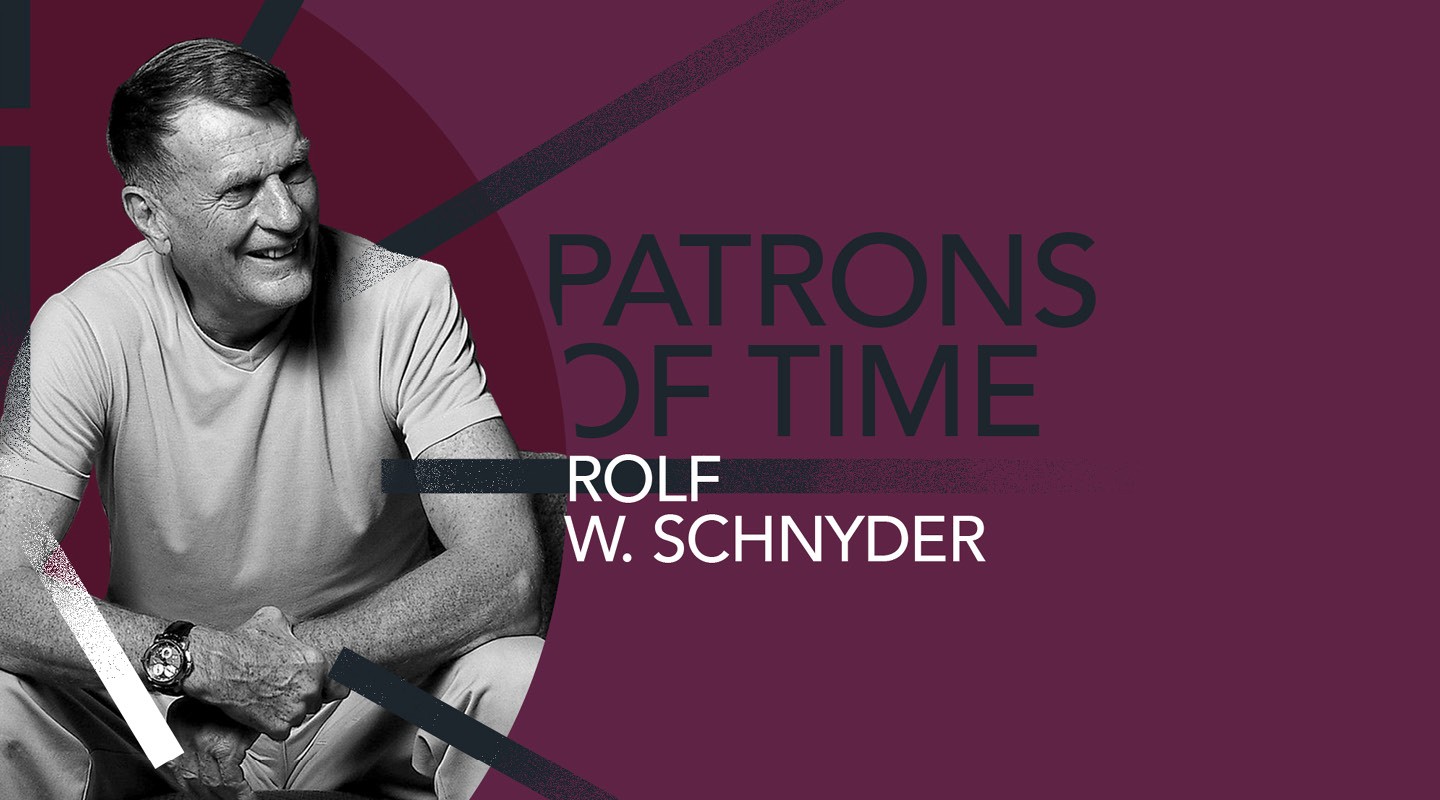
Dubai Watch Week celebrates the man who revived Ulysse Nardin – and with it, the spirit of innovative fine watchmaking
The rich tapestry that is the watch industry today owes a great deal to a surprisingly small group of enterprising mavericks. Names such as Nicholas Hayek, Jean-Claude Biver, Günter Blümlein and Gino Macaluso will echo through watchmaking for generations to come, so pivotal was their role in rescuing traditional Swiss watchmaking from horological armageddon in the early 1980s.
But few among them did so much for the very highest and most experimental end of the business as Rolf W. Schnyder, who dragged Ulysse Nardin back from the brink with a vision of fine watchmaking that many of today’s most recherché independents owe their existence to.
Under his leadership, Ulysse Nardin introduced silicon into watchmaking, created some of the most complicated watches ever seen, and opened a new manufacturing facility that has fuelled the brand’s ambitious projects for nearly two decades.
Schnyder’s watch story begins when he was still a young man. Born in Zurich in 1935, he moved to Geneva in 1956 and got a job in Jaeger-LeCoultre’s advertising department, before taking a post at the company’s London subsidiary. Then, aged just 22, he moved to Thailand, where he began a relationship with the Far East that would shape the rest of his life.
There, he distributed Swiss watches, later setting up a production company that sold parts back to Swiss brands including Certina, Rado, Tissot and Omega. An avid adventurer, he travelled widely, once building a raft and floating down the River Kwai. He also found himself witness to The Chinese Cultural Revolution, photographing events that would see his work published in some of the world’s most important magazines.
In 1973, he sold shares in his manufacturing business, and moved to Kuala Lumpur where he made accessories for Swiss watch companies. Business was good and the company soon diversified into producing watch components, including balance springs, the critical element in a mechanical watch. A Swiss outpost followed, and suddenly Schnyder’s life was straddling the world, with homes in Switzerland and Malaysia.
But the defining moment of his career came in 1983. A keen sportsman who once won a waterskiing marathon around Hong Kong Island, he was in Switzerland to participate in the Cresta Run when he heard that Ulysse Nardin, a historic dial name famous for its marine chronometers, was for sale. At the time, the industry was in crisis, weakened by the volatile quartz market to a point where hundreds of Swiss watch companies went bust and as many as 60,000 workers were laid off.
He visited the factory in Le Locle and was astonished to find an all but empty shell with just one full-time watchmaker working on collector pieces. Sensing an opportunity, he bought it. Schnyder, like his fellow industry visionaries, was both a romantic who believed in the long-term value of a mechanical watch, and a smart businessman who had seen how popular traditional watchmaking remained in the Far East. Despite the downturn, he was convinced there was still a market for traditional Swiss watches and so set about reviving his new concern.
His vision was to position Ulysse Nardin at the high end. He recruited the young watchmaker Ludwig Oechslin who had made an astrolabe wall clock, convincing him to miniaturise it into a watch that would become the first of its kind.
The Astrolabium Galileo Galilei was unveiled in 1985. It had more than 20 complications, showing terrestrial time and solar time, as well as information about eclipses and other celestial bodies. The partnership between Schnyder and Oechslin proved to be the catalyst for the brand’s rebirth. The two would go on to dream up some of the most extraordinary watches ever imagined, and then market them to an increasingly feverish collector community.


Ulysse Nardin Freak Tourbillon Yellow Gold Wristwatch
Ulysse Nardin Freak Tourbillon Yellow Gold Wristwatch
The Planetarium Copernicus followed, and then in 1989 and in collaboration with Christophe Claret, they released the world’s first repeating wristwatch with Jaquemarts – small mechanically animated figures that appeared to hammer out the time.
More commercial pieces followed. In 1994, Ulysse Nardin produced the world’s first GMT watch governed by + and – buttons on the side of the case. Two years later, to mark the company’s 150th anniversary, Ulysse Nardin released a groundbreaking perpetual calendar that could be adjusted forwards and backwards through a single crown. On the eve of the Millennium, they would combine the two innovations to produce what has become Ulysse Nardin’s signature combination of complications.
But there was more to come. In 2001, Ulysse Nardin unleashed the Freak, a seven-day carrousel tourbillon with no hands and no crown often referred to as the first piece of horological modern art. Not only did it defy long-held conventions of traditional mechanical watchmaking, it also introduced silicon into the escapement, a sci-fi development that would do more to shape 21st century watchmaking than any other mechanical innovation. Silicon is watchmaking wonderstuff – it requires no lubrication, is resistant to shocks and temperature changes, and can be produced to extreme tolerances.
In 2002, the Genghis Khan became the world’s first carillon Westminster minute repeater tourbillon with Jaquemarts, and a year later came the Sonata, the world’s first alarm GMT watch that could be set 24 hours in advance. In 2006, for the company’s 160th anniversary, Ulysse Nardin introduced the in-house designed and produced automatic movement, Calibre UN-160, which, like the Freak before it, had a silicon escapement.
Schnyder, who continued to live between Switzerland and Kuala Lumpur, died in April 2011, aged 75. No one man saved the Swiss watch industry. But Schnyder is without question one of the horological glitterati whose brilliance shaped the watch industry we know and love today.
How far in advance do you usually book tickets?
- Within 24h Before
- 1-3 Days Before
- 1-3 Weeks Before
- Over a Month Before
















